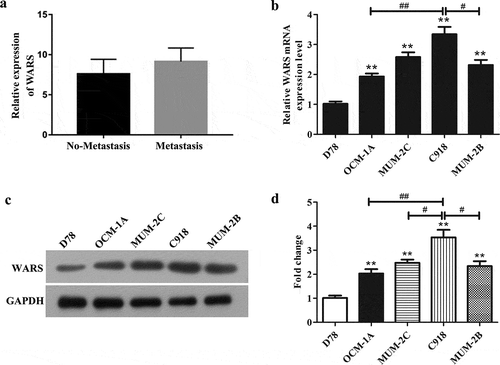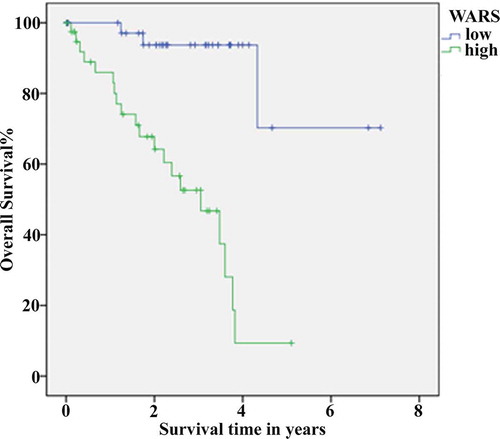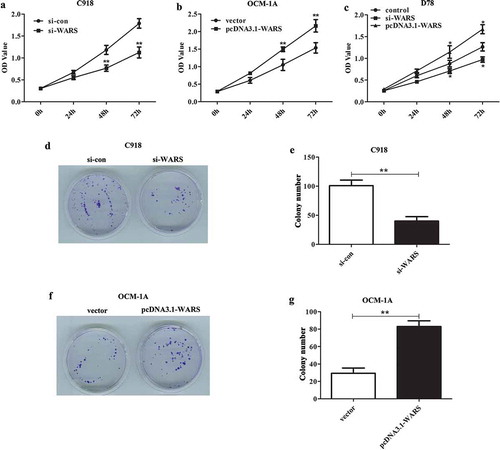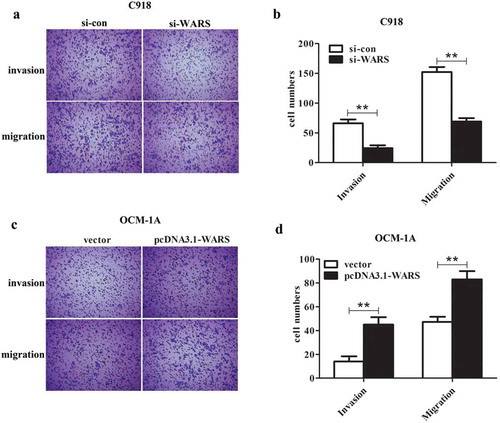Figures & data

Figure 1. The expression level of WARS in UM. (a) Through bioinformatics analysis, we found that the expression of WARS in metastasis group was significantly higher than that in no-metastasis group (P < 0.001). (b, c, and d) The mRNA and protein expression level of WARS was up-regulated in UM cell lines (OCM-1A, MUM-2C, C918, and MUM-2B) than that in normal control cells D78 (**P < 0.01,##P < 0.01, #P < 0.05).

Table 1. The correlation between WARS expression and clinical features of patients with uveal melanoma.
Figure 2. Using Kaplan-Meier method for survival analysis to draw a conclusion that the higher the expression of WARS, the lower the survival rate of patients with UM. P < 0.001.

Figure 3. The efficiency of WARS knockdown/overexpression in UM cell lines C918 and OCM-1A. (a, b, and c) The expression of WARS was markedly decreased in C918 cells after transfected with si-WARS#1 and si-WARS#2 than that in si-con group. (**P < 0.01) (d, e, and f) The expression of WARS was markedly increased in OCM-1A cells after transfected with pcDNA3.1-WARS than that in the vector group. (**P < 0.01).

Figure 4. Deletion of WARS in C918 cell suppressed proliferation and overexpression of WARS in OCM-1A cells promoted proliferation. (a) CCK8 assay revealed that the down-regulation of WARS can reduce the cell viability in C918 cells (**P < 0.01). (b) The cell viability was obviously elevated in OCM-1A cells after overexpression of WARS (**P < 0.01). (c) Up-regulation of WARS can increase the viability while down-regulation of WARS can decrease the viability in D78 cells (P < 0.05) (d and e) Colony formation assay revealed that knockdown of WARS can reduce the ability of cells to form colonies (**P < 0.01). (f and g) Up-regulation of WARS can increase the number of colonies formed significantly than that in vector group (**P < 0.01).

Figure 5. Deletion of WARS suppressed invasion and migration of C918 cells and overexpression of WARS promoted invasion and migration of OCM-1A cells. (a and b) Through the Transwell assay, we found that knockdown of WARS showed a significant inhibition on invasion and migration in C918 cells (**P < 0.01). (c and d) Upregulation of WARS showed a significant promotion on invasion and migration of OCM-1A cells (**P < 0.01).


